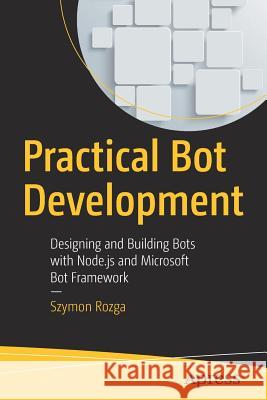Practical Bot Development: Designing and Building Bots with Node.Js and Microsoft Bot Framework » książka
topmenu
Practical Bot Development: Designing and Building Bots with Node.Js and Microsoft Bot Framework
ISBN-13: 9781484235393 / Angielski / Miękka / 2018 / 654 str.
Practical Bot Development: Designing and Building Bots with Node.Js and Microsoft Bot Framework
ISBN-13: 9781484235393 / Angielski / Miękka / 2018 / 654 str.
cena 228,02
(netto: 217,16 VAT: 5%)
Najniższa cena z 30 dni: 227,39
(netto: 217,16 VAT: 5%)
Najniższa cena z 30 dni: 227,39
Termin realizacji zamówienia:
ok. 16-18 dni roboczych
Dostawa w 2026 r.
ok. 16-18 dni roboczych
Dostawa w 2026 r.
Darmowa dostawa!
Kategorie:
Kategorie BISAC:
Wydawca:
Apress
Język:
Angielski
ISBN-13:
9781484235393
Rok wydania:
2018
Ilość stron:
654
Waga:
1.04 kg
Wymiary:
15.8 x 23.6 x 3.6
Oprawa:
Miękka
Wolumenów:
01
Dodatkowe informacje:
Wydanie ilustrowane











